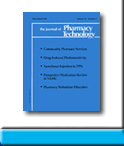 |
 |
The Use of Combination Lipid Therapy in a County
Health System
Margaret Youngmi Pio, Erin Marie Piszczor, Marissa Escobar Quinones, Steven Micheal Boatright, Diem Hong Chow,
Jeffrey Lynn Hulstein, Elizabeth Moss, Annie Chathanatt Mathew, and Nitin Budhwar
To request full article click here.
Background: With the paucity of clinical outcomes trials and guidelines to make compelling recommendations regarding the treatment of dyslipidemia beyond statin monotherapy, we present a descriptive analysis of the combination lipid-lowering therapies being used at a large county hospital system.
Objective: To provide a descriptive evaluation of the comparative effectiveness and safety of various combination lipid therapies in conjunction with a statin.
Methods: Patients of a county health system who received at least 3 months of combination lipid therapy in conjunction with a statin during a 1-year period were eligible for inclusion in this retrospective chart review. The main outcome was a descriptive analysis of the comparative effectiveness among combination lipid therapies, as evidenced by fasting lipid panels.
Results: A total of 834 patients were included in the analysis. Approximately 88% were on 1 additional lipidmodifying agent beyond a statin; 2 or 3 additional medications were much less common. Fish oils and fibrates were the most common nonstatin agents used, comprising approximately 85% of the combination therapies. Approximately 17% of patients had all 4 lipids at goal. A majority of patients were at goal for lowdensity lipoprotein cholesterol, non–high-density lipoprotein cholesterol (non-HDL-C), and total cholesterol, but a large proportion were not at goal for HDL-C and triglycerides. No statistically significant differences were found among therapies for effectiveness related to lipid goals, medication adherence, or safety. The chart review did not find an appreciable number of adverse events. The overall adherence rate was subpar at 56% and varied modestly among treatments.
CONCLUSIONS: This retrospective analysis found no significant differences in effectiveness, adherence, and safety among the combination lipid therapies used in a county health system. Further research is warranted to elucidate the recommended approach to using combination lipid therapies.
J Pharm Technol 2012;28:227-33
To request full article click here.
|
|
|
||
|

